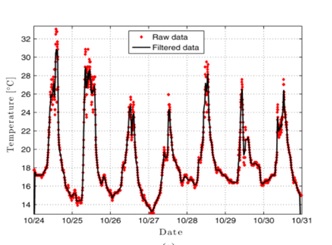Recent Trends in IoT : A review

DOI:
https://doi.org/10.54060/jmss.v2i2.21Keywords:
Internet of Things, Sensors, MachinesAbstract
The first wave of the internet revolution came in with the growth of personal computers and in the second wave the internet came right onto our palms that is with the advent of mobile devices and here we are, living the third wave where all electronics devices are almost already connected to internet or will be in the near future. We are quickly going into another universe of computing and network. Machines with sensors and sensors catching information sending this data to distributed storage for additional and future use and this cycle in the area of science and innovation many are calling as "The Internet of Things". Machine to machine, machine to system, machine to condition, the Internet of everything, the web of clever things, sharp structure — call it as the need might arise, but it's going on, and its future open doors is enormous and huge. In this paper, we seek to highlight the concept of Internet of Things (IoT) in general, as well as reviewing the main challenges of the IoT environment by focusing on the recent research directions in this topic. Recently, IoT has emerged as a new technology that is used to express a modern wireless telecommunication network, and it can be defined as an intelligent and interoperability node interconnected in a dynamic global infrastructure network, also it seeks to implement the connectivity concept of anything from anywhere at any time. They range widely in use, size, energy capacity, and computation power. However, the integration of these smart things into the standard Internet introduces several security challenges because the majority of Internet technologies and communication protocols were not designed to support IoT.
Downloads
References
L. Atzori, A. Iera, and G. Morabito, “The internet of things: A survey,” Comput. Netw, vol. 54, no. 15, pp. 2787–2805, 2010.
P. Bellavista, G. Cardone, A. Corradi, and L. Foschini, “Convergence of MANET and WSN in IoT urban scenarios,” IEEE Sens. J, vol. 13, no. 10, pp. 3558–3567, 2013.
M. Dohler, I. Vilajosana, X. Vilajosana, and J. Llosa, “Smart Cities: An action plan,” in Proc. Barcelona Smart Cities Congress, pp. 1–6, 2011.
Z. Mohammed and S. Elmustafa, “Internet of Things Applications, Challenges and Related Future Technologies,” World Scientific News, vol. 67, no. 2, pp. 126–148, 2017.
M. Hernández-Muñoz, J. B. Vercher, L. Muñoz, J. A. Galache, M. Presser, and L. A. Hernández Gómez, “Smart Cities at the forefront of the future Internet,” The Future Internet Lect. Notes Comput. Sci, vol. 6656, pp. 447–462, 2011.
C. E. A. Mulligan and M. Olsson, “Architectural implications of smart city busi-ness models: An evolutionary perspective,” IEEE Commun. Mag, vol. 51, no. 6, pp. 80–85, 2013.
Y. Yang, L. Wu, G. Yin, L. Li, and H. Zhao, “A survey on security and privacy issues in internet-of-things,” IEEE Internet Things J, vol. 4, no. 5, pp. 1250–1258, 2017.
N. Walravens and P. Ballon, “Platform business models for smart cities: from control and value to governance and public value,” IEEE Commun. Mag, vol. 51, no. 6, pp. 72–79, 2013.
T. Nuortio, J. Kytojoki, H. Niska, and O. Braysy, “Improved route planning and scheduling of waste collection and transport,” Expert Syst. Appl, vol. 30, no. 2, pp. 223–232, 2006.
N. Bressan, L. Bazzaco, N. Bui, P. Casari, L. Vangelista, and M. Zorzi, “The deployment of a smart monitoring system using wireless sensor and actuator networks,” in 2010 First IEEE International Conference on Smart Grid Com-munications, 2010.
N. Bui and M. Zorzi, “Health care applications: A solution based on the Inter-net of Things,” in Proc. ISABEL, 2011, pp. 1–5.
J. Granjal, E. Monteiro, and J. S. Silva, “Security for the internet of things: A survey of existing protocols and open research issues,” IEEE Commun. Surv. Tutor, vol. 17, no. 3, pp. 1294–1312, 2015.
V. Cristea, C. Dobre, and F. Pop, “Context-aware environments for the internet of things,” in Internet of Things and Inter-cooperative Computational Technologies for Collective Intelligence, Berlin, Heidelberg: Springer Berlin Heidelberg, 2013, pp. 25–49.
A. S. Syed, D. Sierra-Sosa, A. Kumar, and A. Elmaghraby, “IoT in Smart Cities: A survey of technologies, practices and challenges,” Smart Cities, vol. 4, no. 2, pp. 429–475, 2021.
N. Neyestani, M. Y. Damavandi, M. Shafie-Khah, J. Contreras, and J. P. S. Catalão, “Allocation of plug-in vehicles’ parking lots in distribution systems considering network-constrained objectives,” IEEE Trans. Power Syst., vol. 30, pp. 2643–2656, 2015.
H. Ning and H. Liu, “Cyber-physical-social based security architecture for future internet of things,” Adv. Internet Things, vol. 02, no. 01, pp. 1–7, 2012.
A. Mosenia and N. K. Jha, “A comprehensive study of security of internet-of-things,” IEEE Trans. Emerg. Top. Comput., vol. 5, no. 4, pp. 586–602, 2017.
Z. H., H. A., and M. M., “Internet of things (IoT): Definitions, challenges and recent research directions,” Int. J. Comput. Appl., vol. 128, no. 1, pp. 37–47, 2015.

Downloads
Published
How to Cite
CITATION COUNT
Issue
Section
License
Copyright (c) 2022 Anshika Rawat, Dr. Amit Pandey

This work is licensed under a Creative Commons Attribution 4.0 International License.























